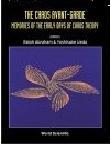 |
The Chaos Avant-Garde: Memories of the Early Days of Chaos Theory
Ralph Abraham and Yoshisuke Ueda.
World Scientific (2000), price $58.00, ISBN: 9810244045.
|
| Reviewer: R. Ghrist, University of Illinois Urbana-Champaign, USA. |
This book is the result of the editors' querying various pioneers in
dynamical systems theory for memoires of their experiences. The time
frame of the remembrances is from 1959 (Smale's arrival in Rio)
through 1974 (the ascendancy of the word
chaos in the
scientific and mathematical community). The
raison d'etre for
the
avant garde moniker stems from the editorial decision to
"invite only the avant-garde, the people who had struggled with
chaos concepts before the acceptance of the new paradigm."
The contributing authors are S. Smale, Y. Ueda, R. Abraham, E.
Lorenz, C. Mira, F. Takens, T. Y. Li, J. Yorke, and O. Rossler. The
articles written by Smale, Ueda, and Lorenz are reprinted from
various existing sources. The lengths of the articles vary
dramatically. Takens' submission clocks in at approximately 500
words. Mira's submission encompasses over 100 pages.
The book is not technical; neither is it meant for the layperson,
since it has little expository component. Several of the articles
freely assume familiarity with dynamical systems terminology and
history. The articles themselves range in style from being terse and
factual to being eerily purple. Example: "The observer-centered
light bubble which unites relativity and quantum mechanics would
then no longer be only a prison to fear: Any better-understood
bondage provides the seeds for its own undoing. A `technology of
liberation' would join the theology of liberation."
First-hand history is always the most fascinating, if not the most
detached and comprehensive. The reader of this text will not get a
comprehensive history lesson in dynamical systems research from
1959-1974. But the reader will be treated to a wealth of fascinating
anecdotes coupled with personal perspectives. Several of the
articles reproduce early drawings and computer plots of now
well-understood dynamical phenomena. These are especially heartening
to see as an indication that dynamical systems has indeed matured.
Most readers will likely chafe at a few of the statements made in
these memoires. More than one additional book could easily be filled
with the contributions of the less-avant of the Old Guard of
dynamical systems pioneers who were not invited to contribute.
Nevertheless, as a window on the workings of the contributors, this
book is an entertaining and informative sample.